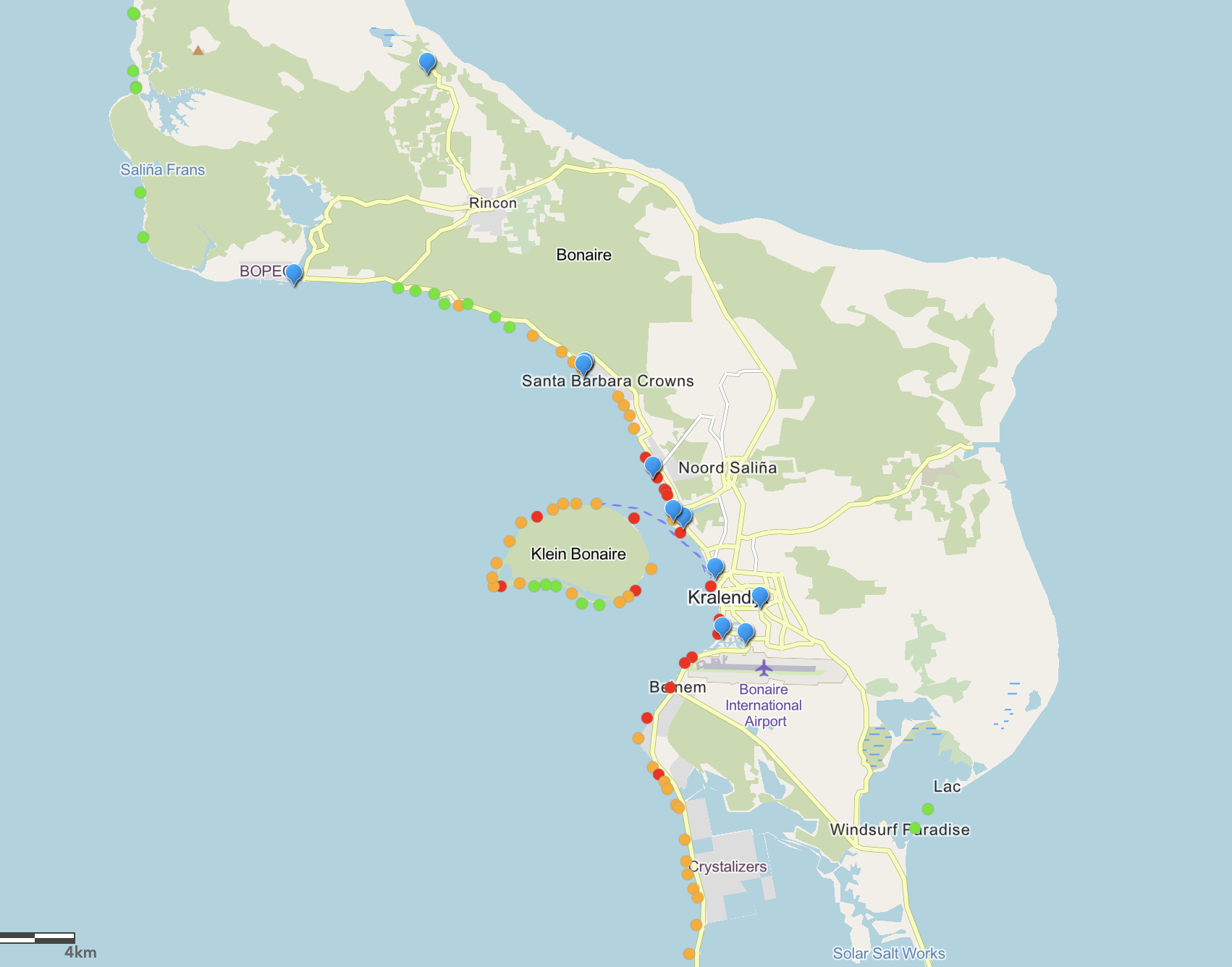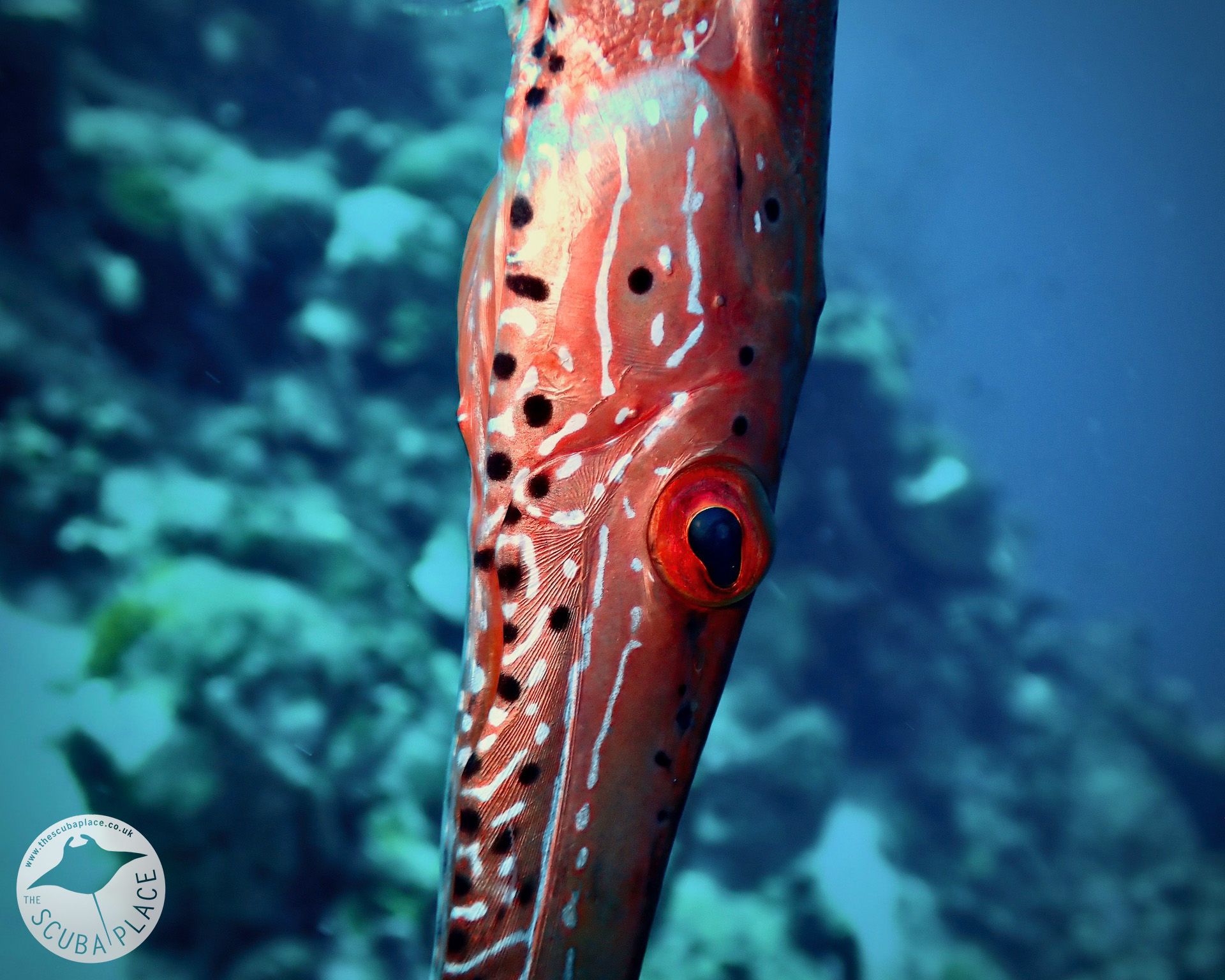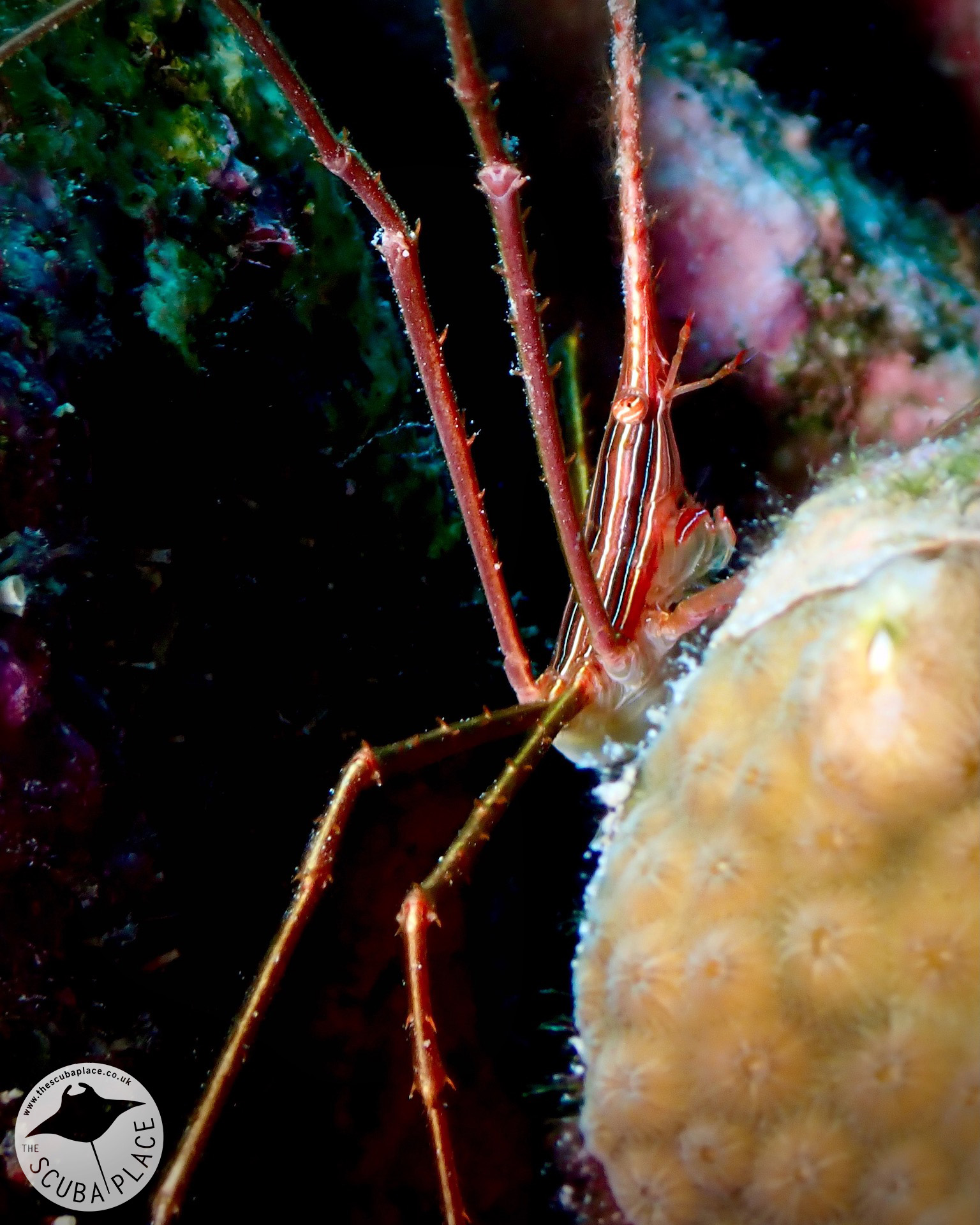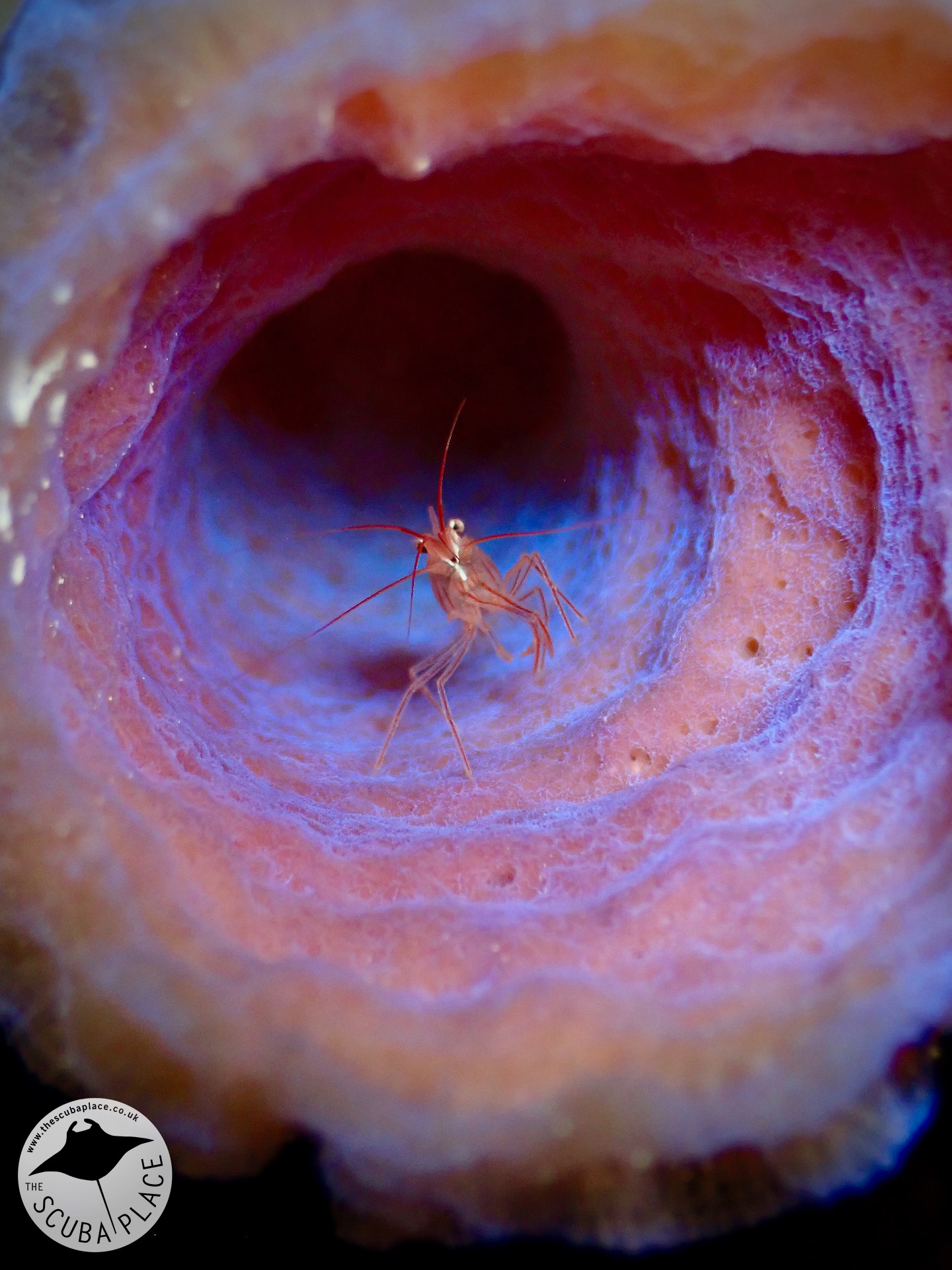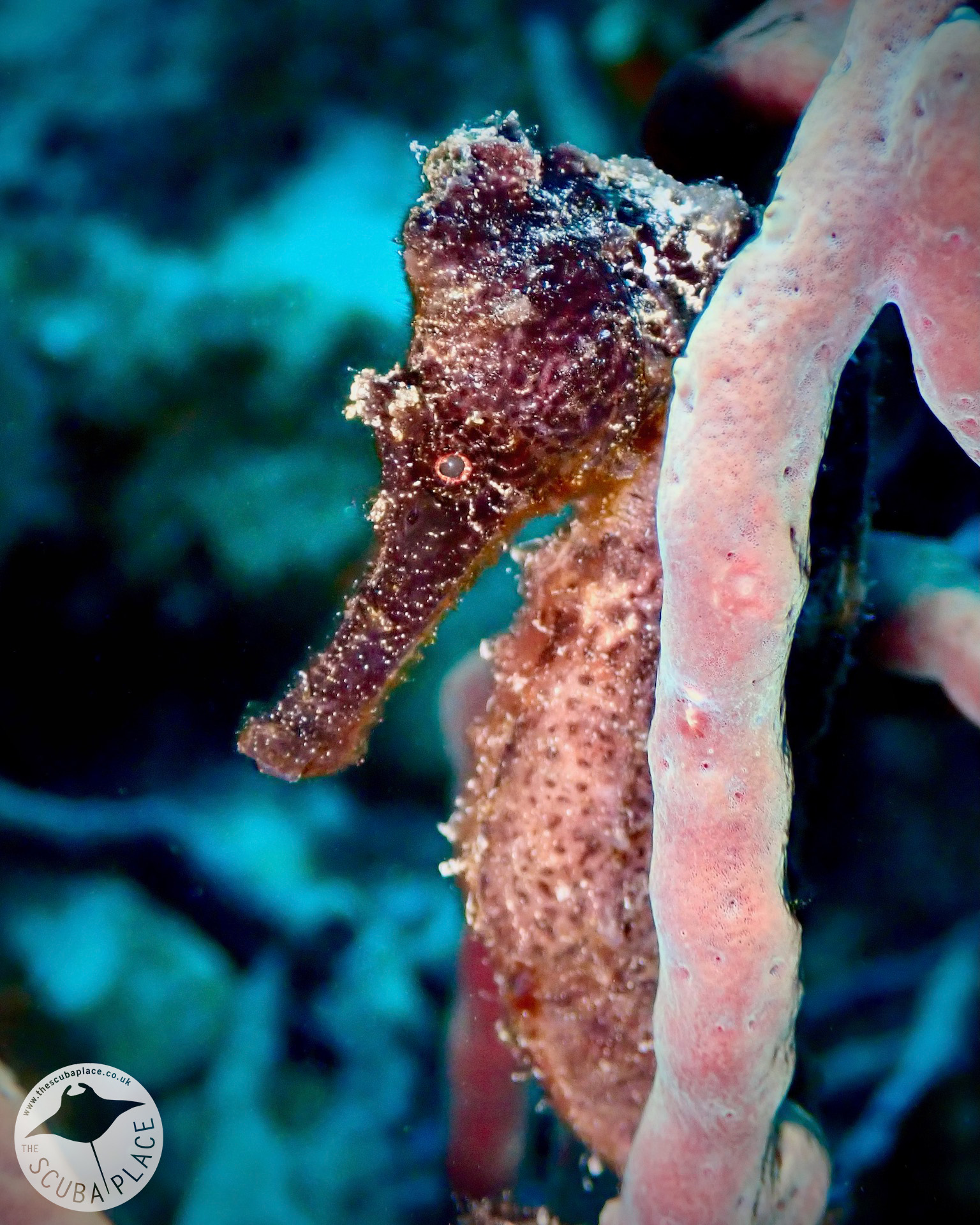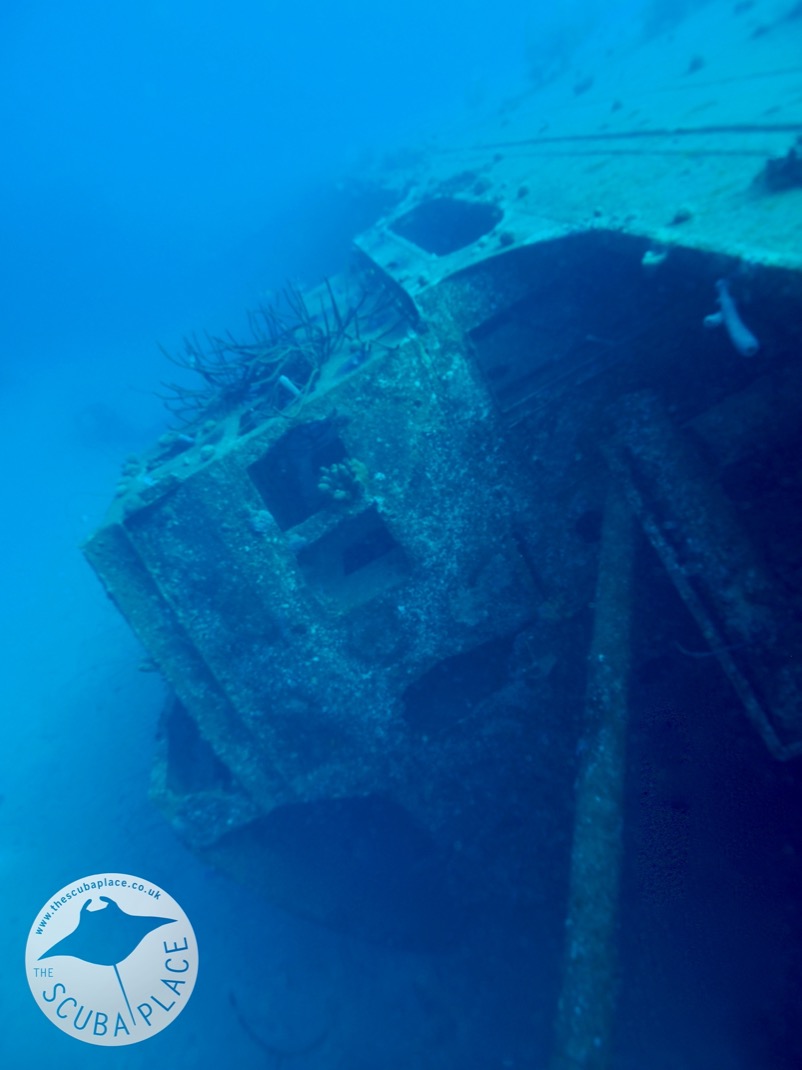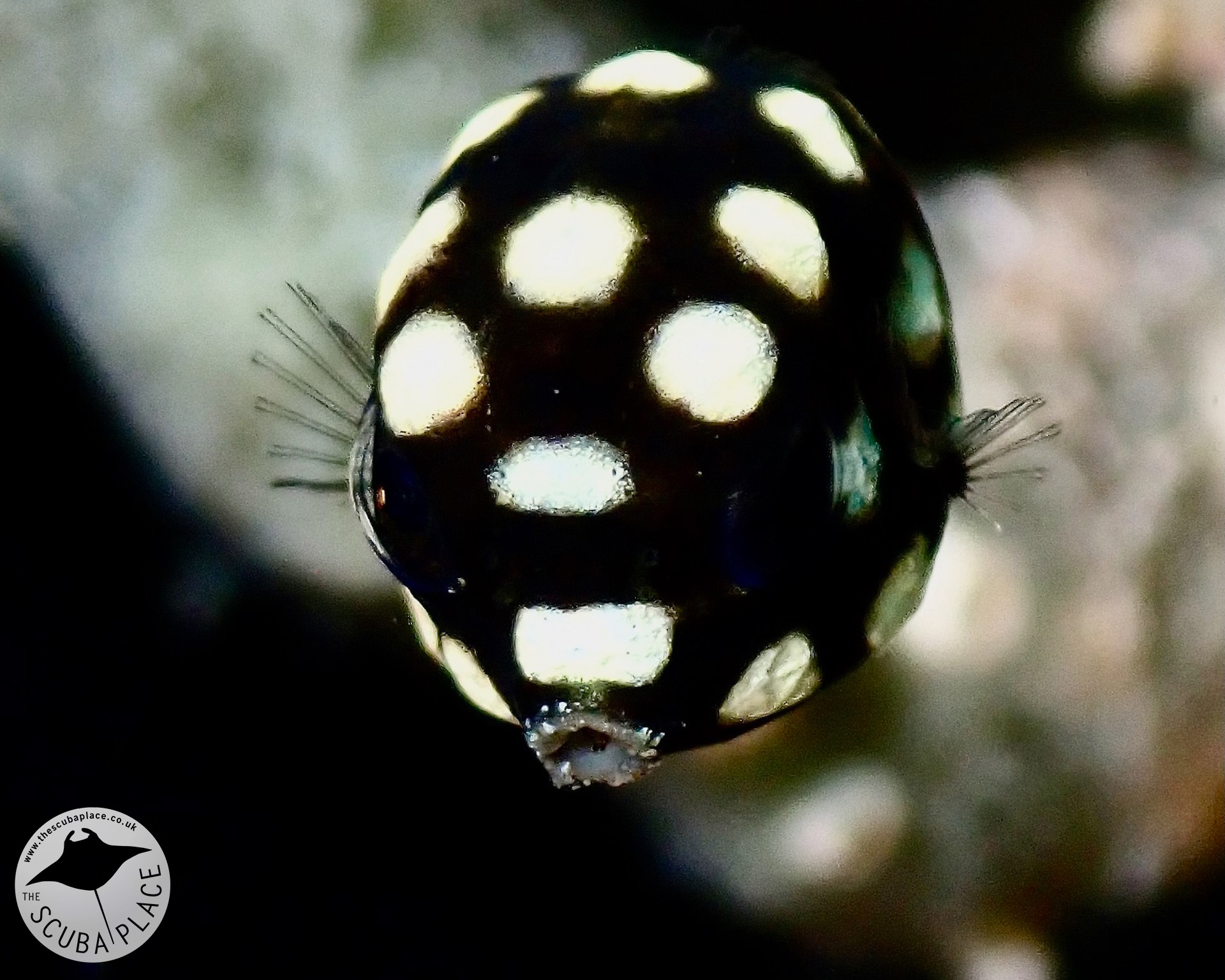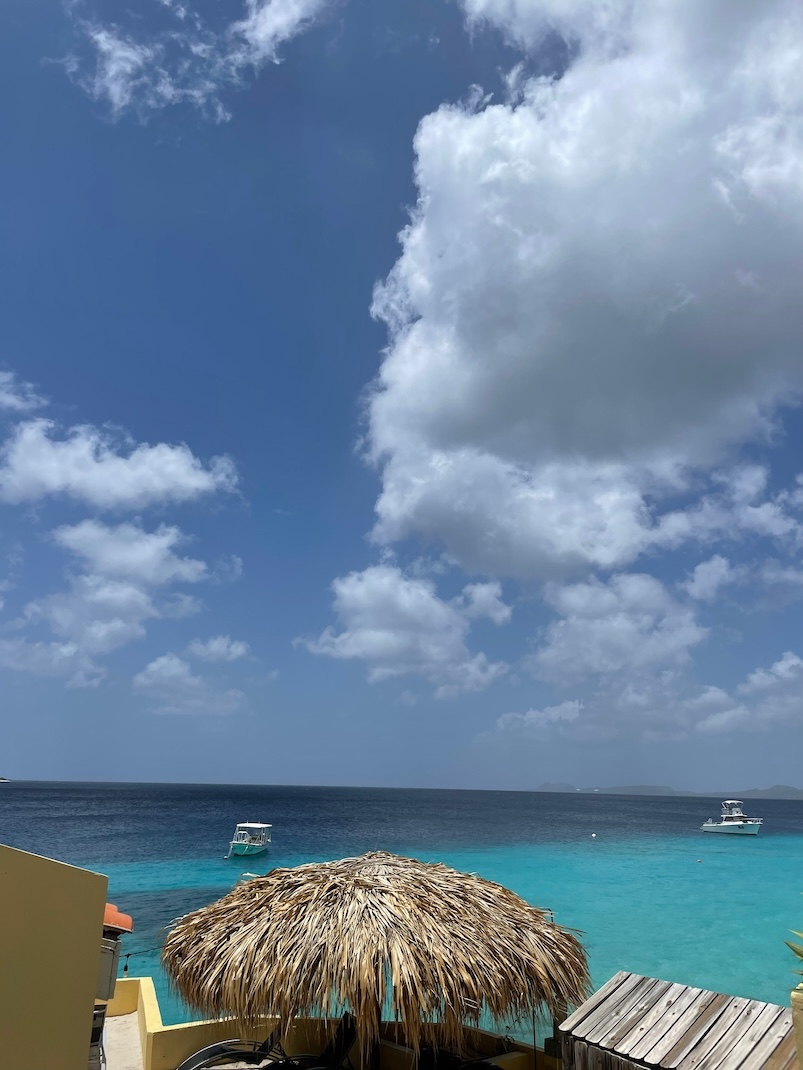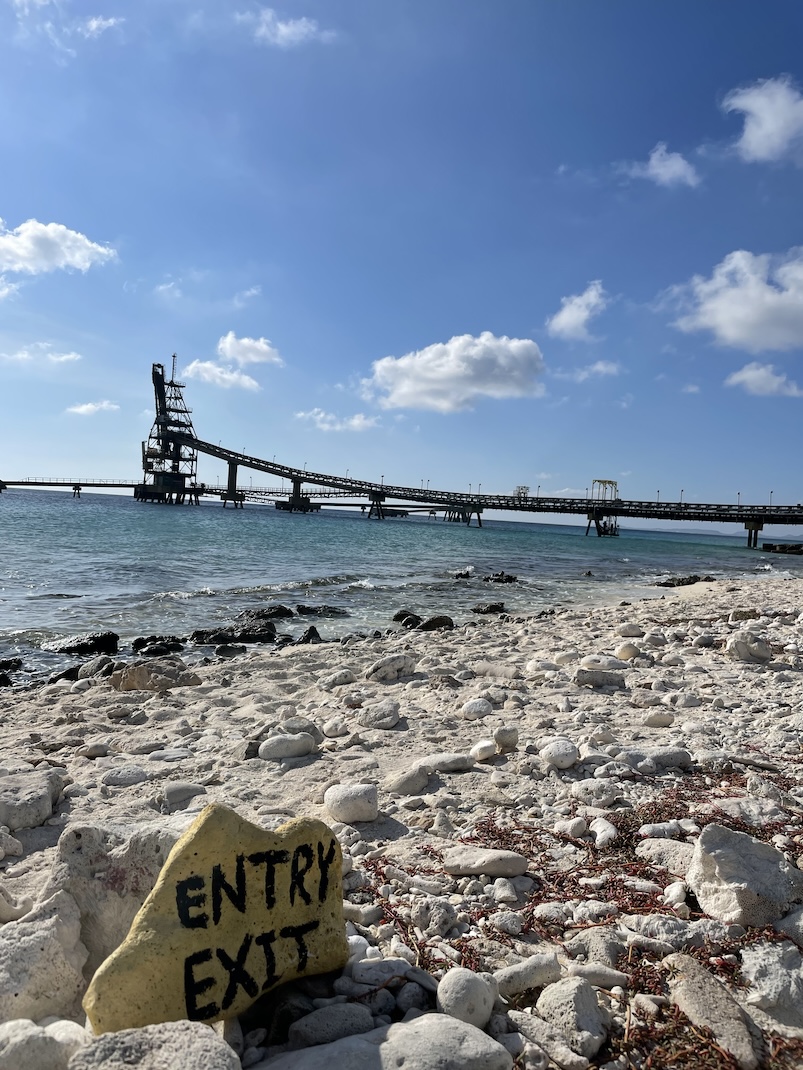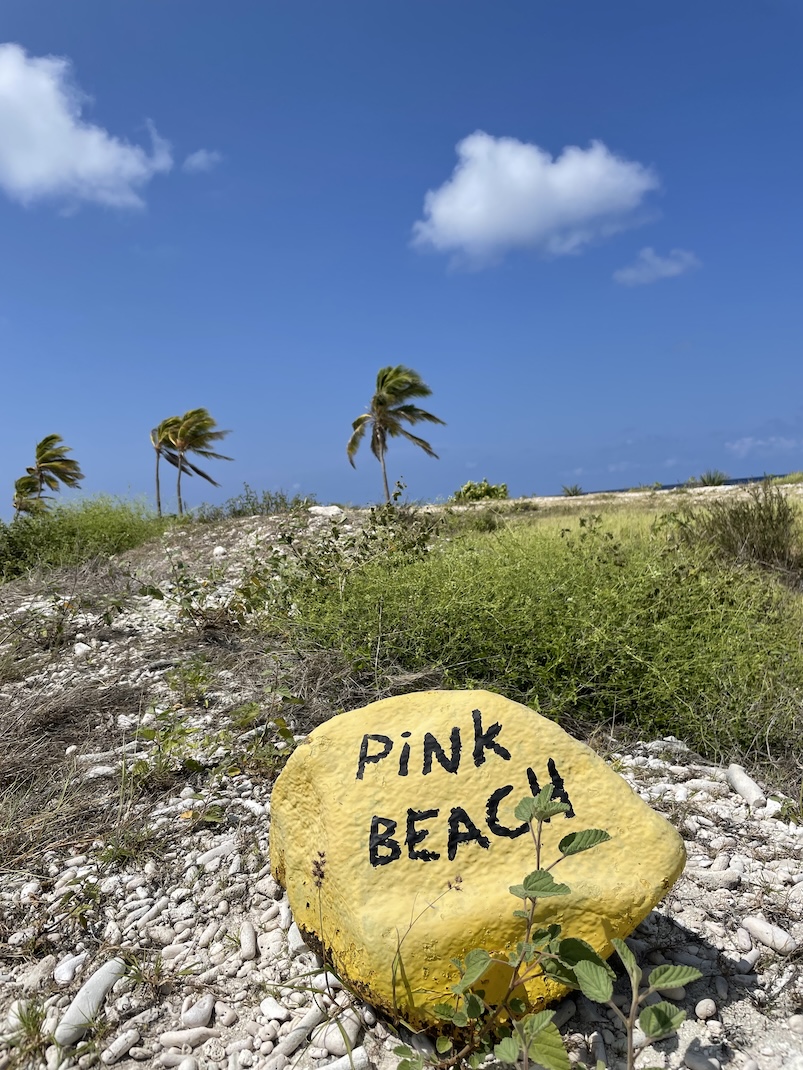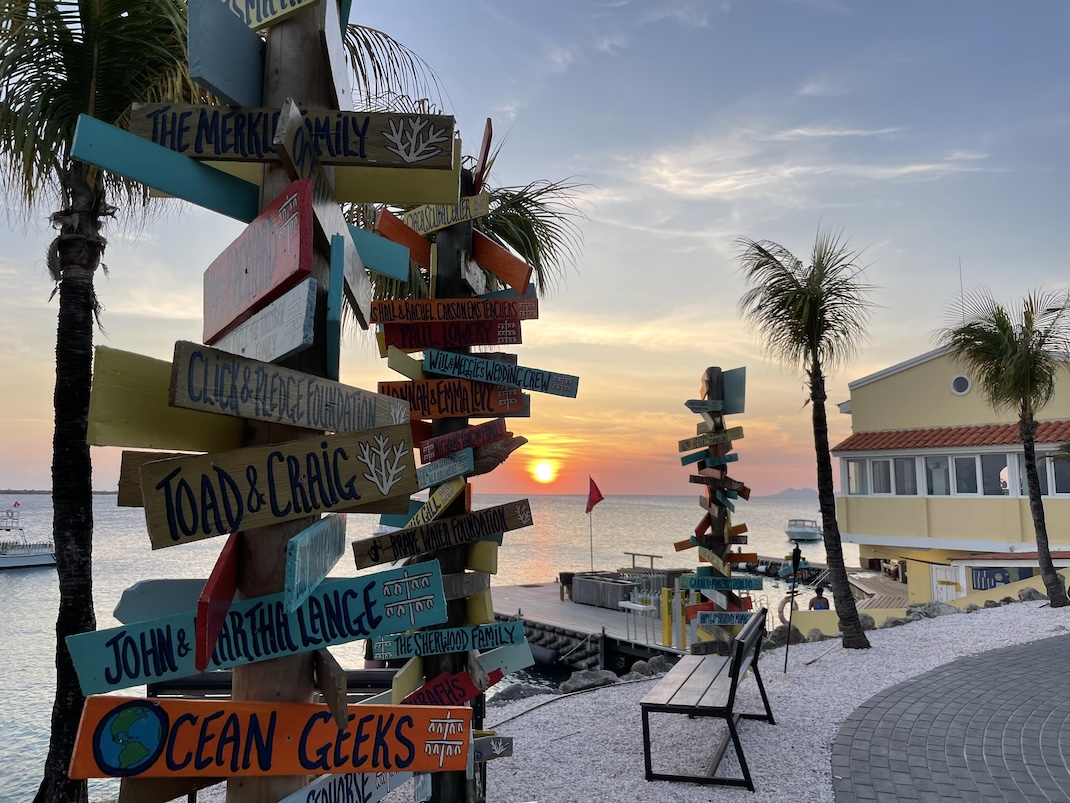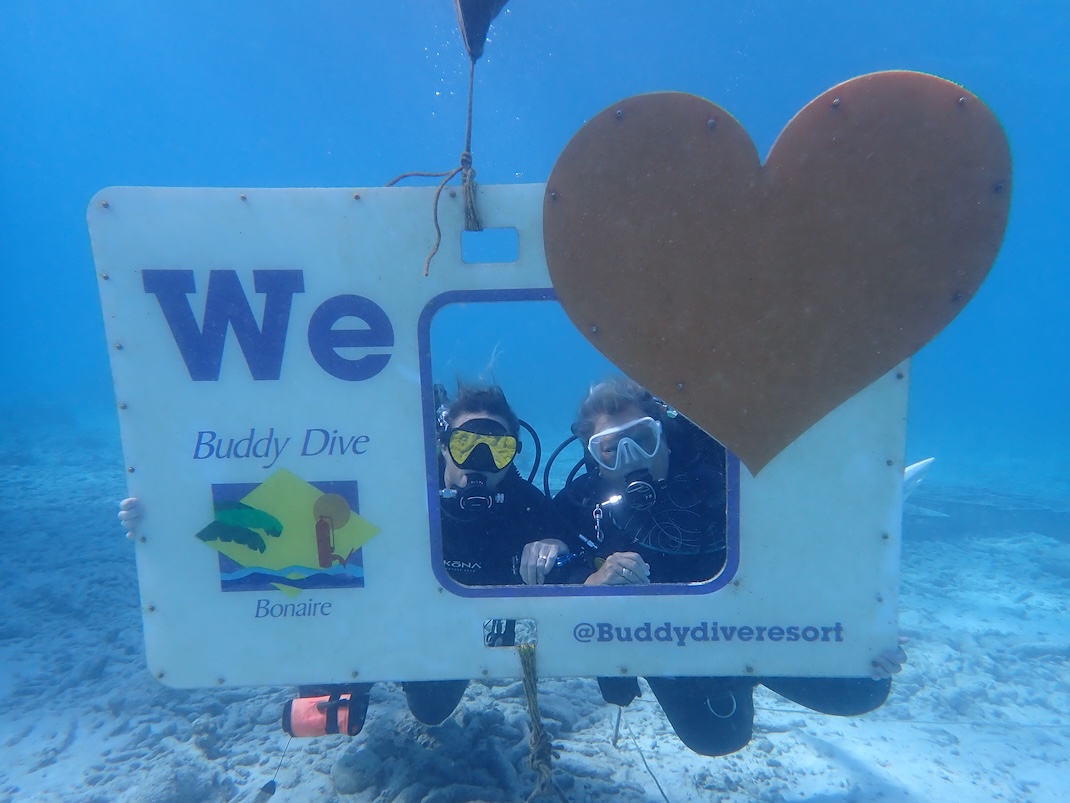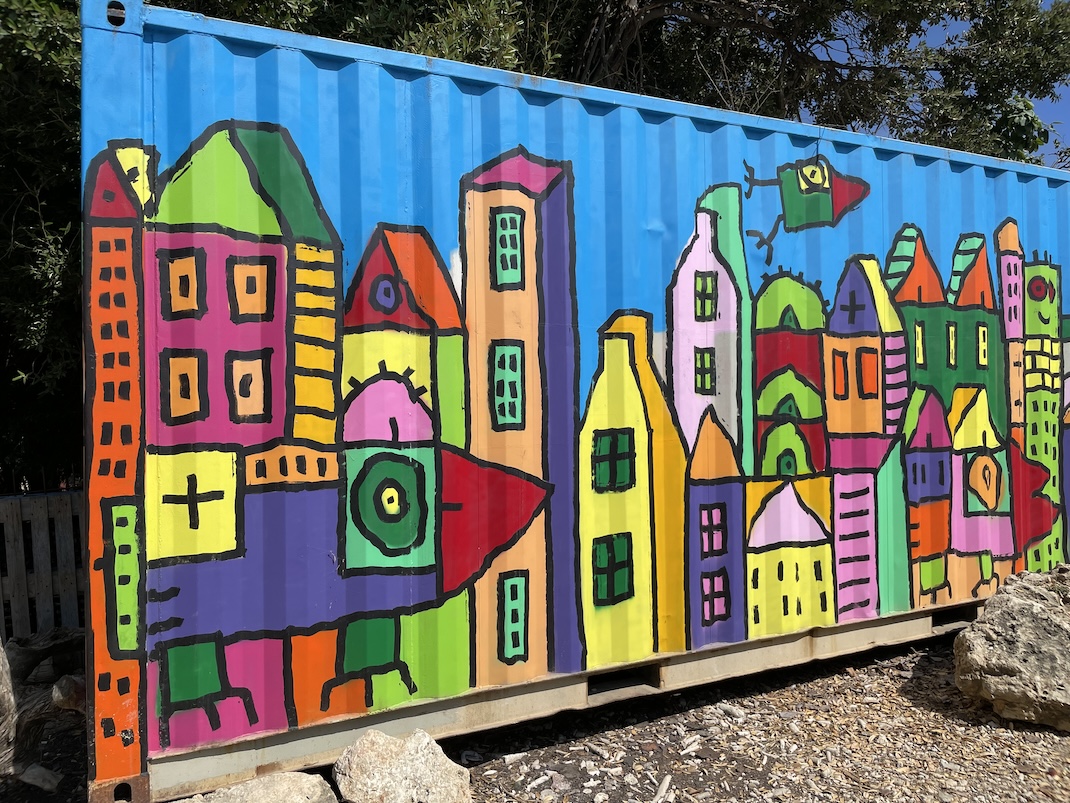Blogs
Bonaire Revisited
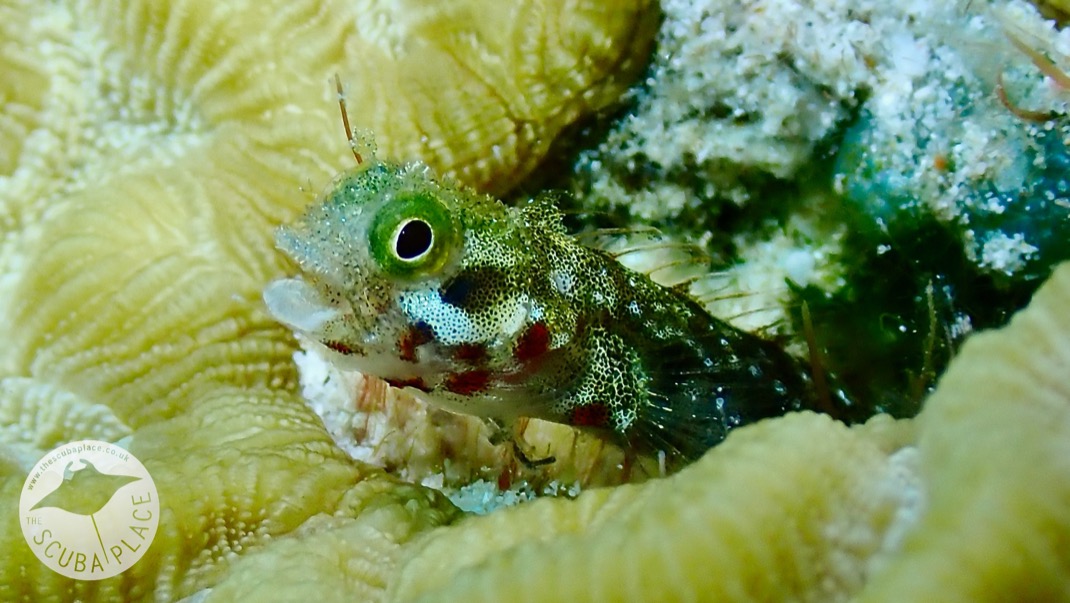
The Scuba Place team hosted a group of 16 divers for a return visit to Bonaire in August 2023. They first visited Bonaire in 2021 during a break from the COVID lockdown. They had a great time then (read the first trip report here) and wanted to experience the Shore Diving Capital of the World once again.
Our group met for an early morning flight from London Heathrow to Amsterdam with KLM. It was a short 90-minute flight and a two-hour layover in Amsterdam gave us enough time to do a little shopping for those few items we forgot to pack and a stop at duty-free. The second leg of the flight was 10 hours with a short stop in Aruba before continuing on to Bonaire. We arrived just after 7:00pm and were efficiently and quickly transported to the resort by the Buddy Dive team.
We chose to stay at Buddy Dive again after a great experience last time. We split our group into two three-bedroom apartments and one two-bedroom. The resort is just the right size… every apartment is close to everything… reception, the restaurants, the drive-thru tank station and the dive centre. We got our keys, checked out the digs and then met at Blennie’s for a bite to eat before calling it a night.
In the morning, we headed down to the breakfast buffet at Ingredients. Every morning we had our choice of sweet and savoury breads and pastries, meat and cheeses, cereal, yoghurt, fresh fruit, eggs, pancakes, sausages and bacon and made-to-order omelettes. The doughnuts were a personal favourite!
We stopped into the dive centre to grab our tank cards and locker keys. An orientation and tour by the dive staff for our group had been prearranged and we were shown how to check the pressure and analyse the NITROX tanks. The drive-thru tank station has tanks at the ready, rinse tanks and lockers for dive kit.
The team at Buddy’s shared with us that Bonaire’s reefs are experiencing coral disease and the national parks foundation STINAPA is working hard to educate and conserve. While the disease hasn’t been officially identified, it is affecting six out of the eight coral species vulnerable to Stony Coral Tissue Loss Disease. Protocols had been put in place in an attempt to help stop the spread including a Red Amber Green system for dive sites and decontamination tanks for dive gear. Divers were asked to rinse gear in specified decontamination rinse tanks before entering the water. When we planned our shore dives, we were careful to make sure we went from Green to Amber or Red and not the other way around and rinsed our gear again at the end of the day. Buddy’s had special rinse tanks at both the drive-thru and down by the dive centre. If you’re interested in more information, check out the interactive map of Bonaire dive sites here.
We learned a lot when visited Bonaire in 2021 so we were prepared with our shopping lists and made quick work of our favourite grocery store Van den Tweel. We grabbed all the bits for our surface interval lunches along with drinks and snacks. Soft sided cool bags worked perfectly for lunches.
When it came to the diving, we relied on our past experience and our dog-eared guidebook and enjoyed sites from north to south and everywhere in between! We saw all the favourite suspects – turtles, frogfish, seahorses, trumpet fish and puffers, filefish, and trunk fish. Salt Pier – a top site – delivered a school of more than 30 Caribbean reef squid! We spent ages with them – such a special experience.
Shore diving allowed us to visit the sites we wanted, when we wanted, for as long as we wanted. Some sites were more challenging than others when it came to entry and exit with the rocky shore and surge, but we had some tricks to help… collapsing walking sticks were a great help for John who was just 8 weeks post hip surgery. After entering the water, the sticks collapsed and were tucked under bungees wrapped around the tank. Putting gear on once in the water helped more than one of us too!
We timed our trip to make sure it included a full moon. Why might you ask? If you haven’t read our last Bonaire trip report you can here. But let’s just say, our ostracod dive was out of this world! We chose to dive Aquarius, a southern site with loads of soft coral, and it delivered! Twenty minutes surrounded by thousands of magical twinkling lights that evoke memories of Tinkerbell waving her wand at the beginning of childhood Disney films – just mesmerising!!! We had of course waxed lyrical about this experience to our group of divers, most of whom hadn’t seen this before, and to see their faces at the end of the dive was our reward – smiles everywhere!
All of the great underwater experiences we had on our previous trip were repeated, and we stretched our legs and took in some more dive sites. Bonaire really does deliver some excellent diving, and the new sites we tested out kept the bar high.
Above water, food and drink are the key things to take into account, and we revisited some old favourites and checked out some new eateries too. Given the apartments at Blennies are set up for self-catering, getting a takeaway is a great way to control the spending!
Blennies – the onsite bar and restaurant at Buddy’s is still great for a post-dive beer, light (and heavy!) lunches, and a good evening dining menu too. There are also numerous themed nights; Taco Tuesday, Steak and Pizza Nights and All-You-Can-Eat BBQ, so you really don’t have to venture out of the resort if you don’t want to. Additionally, a more upscale offering is Ingredients, a lovely a la carte eatery sitting overlooking the bay. The food here is delicious, and the wine list is excellent.
Out of the resort, we hit our favourite El Bigote a couple of times – the authentic Mexican fare and jugs full of cocktails are too good to miss! The staff are excellent, and this really is a super-friendly casual eatery that caters for groups brilliantly.
Turning left out of Buddy’s, and less than a mile up the road, we visited the highly recommended Dragon City Restaurant and Bar. Food here was delicious, huge portions, and great value – and takeaway is available too. According to the dive staff, this is the best Chinese food on the island, and we have to agree.
Finally, another newcomer to us – a former food truck about to open a new permanent location, the Fat Dog Tacqueria and BBQ. If you like authentic Texas BBQ, slow roast everything and pulled beef and pork, this is a place you cannot miss. A huge platter, including burnt ends, pulled pork, spicy sausages, brisket and much much more, plus coleslaw and a potato salad fed four of us for two meals for just $50……delicious food and excellent value!
On our off-gassing day, we decided to get busy and play with toys – speedboat toys! Splitting into two groups, we hired two virtually brand new 16’ centre console sports boats with 70 HP engines and an inner tube of course – and off we went! We packed up cooler bags with picnic lunches and drinks, and spent four hours zipping around the bay, towing those brave enough to jump onto the tube at speed! This was great fun and a very different way to spend a non-diving day. $70 plus fuel was the cost per person, and this was well worth the spend!
In summary, Bonaire delivered the goods again – this is an excellent destination for dive clubs and group travel. Our hosted trip group was made up of people travelling from London, Cardiff and Manchester – all via Amsterdam, and there are plenty of other regional offerings too, making it easy for anyone in the UK to get to.
Bonaire has a host of hotels and apartment offerings, and numerous dive centres too. We dived with Buddy’s two years ago and they were excellent then. This year, they were even better! Having everything under one roof and on-site is the real benefit to visitors – accommodation and dining, plus vehicle rental, tank filling stations and of course a very easy access house reef all add up to a very streamlined operation, and this makes great sense for those travelling the distance to get there.
And we can’t leave out the value for money – it is just too good not to mention. A week, including flights, costs from as little as £1799, including truck rental, unlimited nitrox, and breakfast. Two weeks starts at £2999pp. In terms of cost per dive, one of our gang did 52 dives in 14 days…..that’s just £60 per dive. Realistically though, 24 dives in a week equates to £75 per dive. For direct comparison, a Red Sea liveaboard with 22 dives comes in at around £90 per dive, and a Maldivian liveaboard with 17 dives equates to close to £165 per dive. Bonaire might not be the Red Sea, or the Maldives, but it really does deliver the goods.
If you or your dive club is looking for a new destination, don’t overlook the Shore Diving Capital of the World, Bonaire! Get in touch and let us help you plan your next dream diving holiday! And check out our 2021 Bonaire Trip Report for more information here.
Key Facts :
- Getting there : Our flights were with KLM Airlines flying from Heathrow to Bonaire via Amsterdam and a quick stopover in Aruba. The first flight is a quick 90 minutes. A quick two-hour layover before our 11-hour flight onto Bonaire arriving at 7:15pm. We were greeted by Buddy Dive staff and after a quick 15-minute drive we arrived at the resort. We were quickly given our room keys and off to the restaurant for some food. Our flight home left after dinner arriving in London in the early afternoon. KLM offers flights to Amsterdam from many UK airports so alternatives are readily available.
- Air temperature : Tropical – average daily temperature throughout the year is 31°C. Rainfall passes quickly and the sea breezes are most welcome!
- Water temperature : 28-30°C. A 1-3mm full suit or shorty is recommended to protect from scratches and stings and to keep the sand out.
- Visa requirement : UK passport holders are permitted to enter Bonaire without a visa for a period of 90 days.
- Immigration : A Bonaire Tourism tax of $75 is required to be paid before arrival and can be done online. A QR code is provided and must be shown to airport personnel on arrival and departure.
- Tourism : The STINAPA Marine Park of $40 is required before arrival and can be paid online. You are required to have your marine park QR code on hand should you be asked by the authorities.
- Currency : US Dollars are accepted across the island. Some establishments accept only cash so be sure and have some on hand. ATMs are easily found.
- Electricity : 120V with European 2-pin plugs.
- Internet and Wi-Fi : There is wifi in resort and worked well in our room and all over the resort. We were able to email, WhatsApp and post on social media without issue.
Price Guide: For 2024 expect from £1799 per person for 7 nights at Buddy Dive with bed and breakfast plus unlimited NITROX and truck rental. Two weeks from £2999 per person. Includes flights and ATOL protection.
Our Advice: Get your dive club together and visit Bonaire! Shore and boat diving are available and the area is suited for all levels of diving experience. Buddy Dive is perfect for big and small groups. A well-equipped dive center and amazing house reef can’t be beat!
Packing tips :
- Bag for Life : $4 in the supermarket! And you will need a quarter ($0.25) for the shopping trolley!
- Cool Bag : Great for keeping your sandwiches and snacks cool in your truck, especially if you have a frozen water bottle in it too. Buy two big bottles and freeze one, chill the other.
- DIN adapter : Tanks in Bonaire are A-clamp.
- Dive Boots : With ultra-thick soles – you will be walking across rocks and dead coral, so good protection is needed.
- Insect repellent : We’ve made a habit of throwing some repellent in our dive bags every trip but with the lovely breezes we didn’t suffer the mozzies much at all!
- Rechargeable fan(s) : If you’ve read any of our recent trip reports we recommend these over and over again. We can’t believe we travelled without them for so many years! Join the fan club and grab one off Amazon… you won’t regret it!
Come Dive with Us!
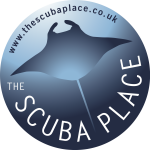 The Scuba Place designs and builds custom scuba diving holidays. With personal knowledge and experience diving in many of our destinations, there is no one better to help build your dream dive holiday. Come Dive with Us!
The Scuba Place designs and builds custom scuba diving holidays. With personal knowledge and experience diving in many of our destinations, there is no one better to help build your dream dive holiday. Come Dive with Us!
Call us at 020 3515 9955 or email at reservations@thescubaplace.co.uk
Find us at https://www.thescubaplace.co.uk
Facebook : https://www.facebook.com/thescubaplace
Instagram : https://www.instagram.com/the.scuba.place/
YouTube : https://www.youtube.com/channel/UCH684OdioYirI-zzdT58Ceg
Blogs
Alonissos: The complete diving destination (Part 1)

In June we were incredibly fortunate to be invited to dive in Alonissos, a small Greek Island in the Sporades island chain located in the North Aegean Sea. While I have long been a big fan of the Greek Islands as a great holiday destination, I had not had the opportunity to do any diving on previous visits and Mike and I were extremely excited to see what Alonissos had to offer both above and below the surface!

The Sporades are easily accessible via the airport in Skiathos (the first island in the chain), which is served by Jet2 flights from all major UK airports from May through October. Numerous ferries and charter boats make island hopping from Skiathos Town a breeze. After an hour boat ride, the picturesque port of Patitiri was a wonderful introduction to Alonissos, where we were met by our gracious hosts Kostas of Albedo Travel and Dias of Alonissos Triton Dive Center. Mike and I were delighted to be staying at the Paradise Hotel, aptly named for its stunning views over the sea and great location for walking to the waterfront.

Alonissos is beautifully situated in the National Marine Park of Alonissos and the Northern Sporades, the largest marine protected area in Europe. The surrounding seas offer fabulous marine life, including incredibly rare species such as the Mediterranean monk seal. They boast deep walls covered in gorgonians and sponges, stunning topography with caverns, swimthroughs and pinnacles, and the first accessible ancient shipwreck from 500BC!

In locations where historical sites have been reported, the waters are largely restricted, but with collaboration between government, underwater archeologists and dive centres, incredible underwater museums are being created for a truly unique diving experience. Alonissos is home to the first of these, the Ancient Shipwreck of Peristera Accessible Underwater Archeological Site. The chance to dive into history (along with reports of healthy reef life and amazing underwater topography) meant Mike and I were keen to get in the water.

Our introduction to the diving around Alonissos was at the Agios Georgios Pinnacles, in the channel between Alonissos and Skopelos. This fantastic site was named “The Chimney,’ and proved to have a huge amount to see. We got to a decent depth here (over 25m), and marvelled at a colourful reef wall with a wonderful swim through whose rocky walls were absolutely covered with life. As well as brilliant topography there was no shortage of macro life here. We saw numerous nudibranchs, five different species in total. The second dive at Mourtias reef nearby was a shallower dive along a nice wall with lots of crevices. Several moray eels and grouper called this site home. We enjoyed looking in the crevices for lobster and smaller benthic life, such as cup corals and tunicates.

Our itinerary allowed us two dives a day with afternoons left to explore the island with our hire car and evenings to enjoy the famous Greek hospitality. This proved to be a lovely mix of in-water and land based diversions.

The next days diving to the Gorgonian Gardens and Triton’s Cave was to be even better! These two stunning sites are nothing short of fabulous. The Gorgonian Gardens was a deep wall near to the Agios Georgios islands. The ever-present currents in this deep channel meant that the sea life was amazing … the namesake Gorgonian sea fans dotted the wall at a depth of 30 to 50 meters, getting ever larger the deeper we went. Above 30m was by no means less beautiful, with sponges, corals, scorpionfish, moray eels and some rare and colourful nudibranchs.

The second shallower dive of the day was to Triton’s Cave or the Cavern of Skopelos, on the east side of that island. The spectacular rock formations had wild striations both above and below the water making a truly epic topography. The cavern entrance was at 14m, and big enough for a buddy pair, winding up to 6m and passing two beautiful windows out into the blue. Emerging from the cavern, the light at the shallower depths and the incredible rock formations made for a fantastic gentle swimming safety stop and we all surfaced by the boat with massive grins.

Check out our next blog :Alonissos: The complete diving destination (Part 2)” to hear about our amazing dive on the 2500 year old Peristera Wreck!
Thanks to:
Alonissos Triton Dive Center https://bestdivingingreece.com/
Albedo Travel https://alonissosholidays.com/activities/
Paradise Hotel https://paradise-hotel.gr/
Alonissos Municipality https://alonissos.gr/en/
Blogs
Mamma Mia! Diving Skopelos (Part 2)

Our second days dive itinerary was to the famous Christoforos wreck! This is arguably the best dive in Skopelos and though only open to divers with deep diving experience, this 83m long wreck is well worth the visit.
The Christoforos sits in 43 meters of water with the deck at 32 to 35 meters. A 30m dive can give an impressive view of the wreck, though such a large wreck needs a few dives to truly do it justice. Given its ideal location just a 2 minute boat ride from the dive centre dock it is an excellent first dive of the day. The sheltered site is also diveable in all but the absolute worst weather so although deep, the water is usually clear with little to no current making it a very pleasant dive. The site is superb for technical diving and a great training site for the Tec 40 and 45 programs, offered by Skopelos Dive Center.

The Christoforos wreck was originally a collier ship built in 1950 at Grangemouth shipyard under the name “Thomas Hardie”. In 1976 she joined the Greek merchant fleet as “Christoforos”. On the 2nd of October 1983 the Christoforos was carrying 2600 tonnes of cement from Volos to Piraeus Port. During the voyage the weather turned, resulting in the ship developing a 7 degree list, whereby she changed course for safe anchorage at Panormos, Skopelos. The ship reached Panormos at 16:00 with a list of 17 degrees and water ingress to No. 1 hull. Though attempts were made to right the vessel, the crew were ordered to abandon ship at 22:00. The captain, lieutenant and the quartermaster remained to try and save the ship, but had to abandon the attempt themselves and the Christoforos finally sank at 05:30 on 3rd October 1983. She now sits upright in 43 meters of water less than 200m from shore in Panormos.

Diving has only been allowed here since 2018, so the wreck is very well preserved and a real treat to dive. Permission to dive here was granted by the authorities after lots of incredibly hard work by the Skopelos Dive Center staff. Having a fantastic wreck in such an amazing location and in excellent condition is a real privilege.

Of all the sites in Skopelos this was the site Mike and I were most keen to experience. Having kitted up and zipped across the bay to the mooring, we left the surface and followed the descent line until the wreck emerged spectacularly from the blue at 15m. She is a big and beautiful wreck, sitting as though calmly continuing her journey along the seabed. With most of her original features still intact there were points of interest everywhere, including the anchors, winches, ships telegraphs, the wheel and RDF antenna.

We found that aquatic life had colonised the ship, with schools of fish, electric blue nudibranchs, a large moray eel and the resident scorpionfish lurking inside the bridge. The Christoforos was truly a stunning wreck and despite maximising our time at depth we eventually had to say our goodbyes and begin the slow and steady return to the surface.

After a superb morning dive we had the afternoon to do a little sightseeing of the island, with a trip to the church of Agios Ioannis Kastri made famous by the blockbuster movie “Mamma Mia!”. Mike and I spent a happy afternoon pootling around in our little hire car before meeting up with Lina from Skopelos Dive Center. An underwater archeologist as well as a dive professional, Lina had offered to show us a rather special attraction, the Christoforos shipwreck Digital Spot public information and awareness centre.

A fantastic initiative made possible from the collaboration of the government and hard work of the staff at Skopelos Dive Center is the “Digital Spot” in Agnontas port. This information center has a number of displays on the history of the Christoforos wreck, the process by which the wreck was allowed to be opened to the public for diving tourism, other sites of historical interest in the area, a video of the wreck and the best bit, a virtual reality dry dive experience! The beauty of the VR system is that non diving members of the family can see what you have seen on the wreck, or you can see areas that you may not have explored during the dive due to time or depth limitations. It was a truly immersive experience and a great addition to the dive itself.

After a wonderful day we celebrated our last evening on the island with an exquisite meal in Skopelos Town with fabulous views over the town and bay, washed down with the excellent local wine. The lamb with lemon and potatoes was a meal which I could happily eat every day for the rest of my life!

Skopelos is an island that truly has it all. The diving is excellent, the landscape is beautiful with plenty of non diving activities, the locals friendly and the food and drink superb. Given how accessible it is as a holiday destination it has avoided becoming overcrowded and even in peak season offers a fun yet relaxing atmosphere. We highly recommend giving Skopelos a visit. We will certainly be back again!
Thanks to:
Municipality of Skopelos (https://skopelos.com/)
Skopelos Dive Center (https://sporadesdiving.gr/)
Ionia Hotel (https://www.ioniahotel.gr/en)
Dolphin of Skopelos (https://dolphinofskopelos.com/)
Ta Kymata restaurant (@takymata)
The Muses restaurant (https://www.facebook.com/TheMussesMousses/)
Aktaiov resturant (https://skopelos.com/listings/aktaion-taverna/)
-

 Blogs2 months ago
Blogs2 months agoDiving With… Nico, Ocean Earth Travels, Indonesia
-

 News1 month ago
News1 month agoMurex Bangka Announce New Oceanfront Cottages & Beachfront Dining
-

 Blogs2 months ago
Blogs2 months agoA new idea in freediving from RAID
-

 Marine Life & Conservation1 month ago
Marine Life & Conservation1 month agoIceland issue millionaire whale hunter a licence to murder 128 vulnerable fin whales
-

 Marine Life & Conservation2 months ago
Marine Life & Conservation2 months agoThe Shark Trust Great Shark Snapshot is back
-

 News3 months ago
News3 months agoCharting New Waters; NovoScuba Goes Global with the Launch of their Revolutionary Dive Training Agency!
-

 Gear News1 month ago
Gear News1 month agoNew Suunto Ocean – a dive computer and GPS sports watch in one for adventures below and above the surface
-

 Marine Life & Conservation Blogs2 months ago
Marine Life & Conservation Blogs2 months agoBook Review: Plankton


